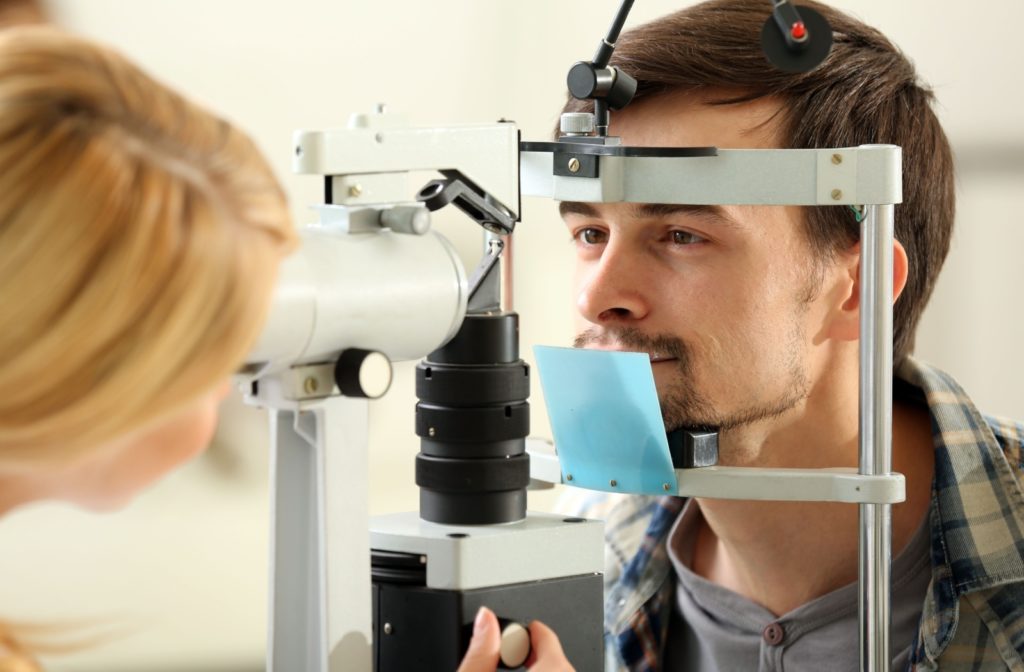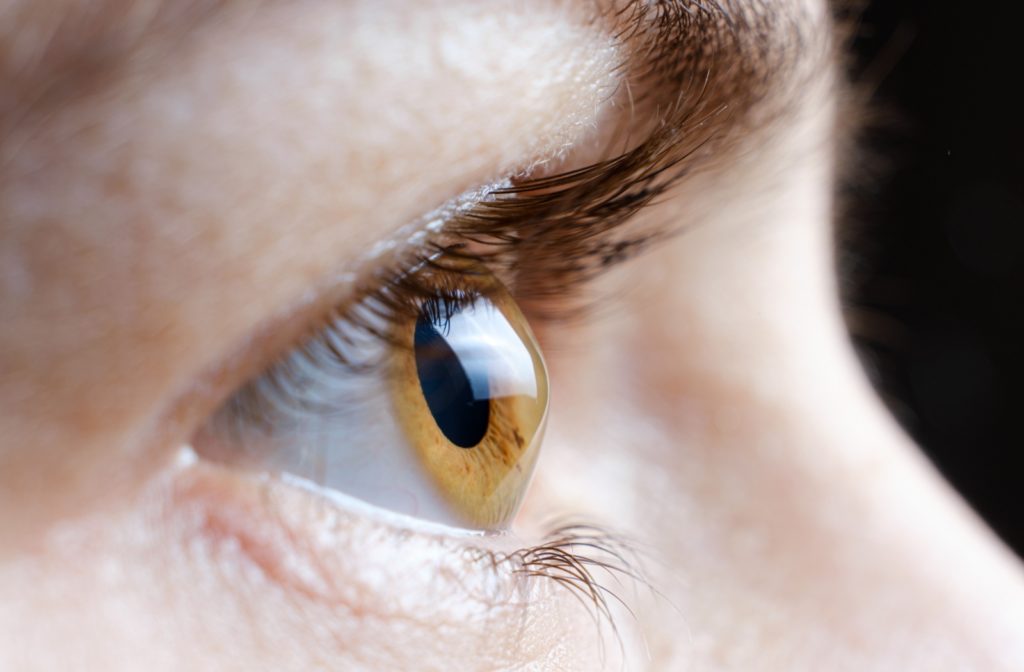About 10% of Americans have eye diseases that might cause serious, lasting vision loss. An eye doctor can often treat or manage these problems early on before they get worse.
Keratoconus is a progressive eye disease that affects the cornea, causing it to thin and bulge into a cone-like shape. This condition can lead to distorted vision, increased sensitivity to light, and difficulty wearing contact lenses or glasses.
For those diagnosed with keratoconus, the question of whether it can be cured is a pivotal one, often accompanied by a sense of uncertainty and concern. While there’s no cure for keratoconus, various treatments can manage symptoms and improve vision, depending on the disease’s severity and progression rate.
At Foothill Optometric Group, we design our eye exams to spot early signs of eye disease. Our goal is to find any issues quickly so we can figure out the best way to handle them. Choosing us to look after your eye health means you’re taking a smart step to protect your vision.
Understanding Keratoconus
Before delving into treatment options, it’s essential to understand the nature of keratoconus. Keratoconus, a progressive eye disease, causes the cornea to thin and bulge, distorting vision as it alters light’s path to the retina.
While its exact cause remains unknown, factors such as genetics, environmental triggers, and structural abnormalities in the cornea are believed to play a role in its development. Keratoconus typically manifests during adolescence or early adulthood and can progress gradually over time.
Treatment Approaches
Corrective Lenses
Eyeglasses or soft contacts can manage slight vision distortions in the early stages of keratoconus, but as the condition worsens, these options falter due to their inability to conform to the cornea’s altered shape, severely affecting vision.
Specialized Contact Lenses
A shift to specialized lenses like rigid gas permeable, hybrid, or scleral lenses designed for keratoconus’s unique challenges may be necessary. RGP lenses, small and oxygen-permeable, maintain their shape to enhance visual clarity by focusing light accurately onto the retina.
Scleral lenses are larger, covering the cornea to smooth out irregularities, thus improving vision and reducing discomfort. Custom-fitted to each patient’s eyes, these lenses address keratoconus by correcting corneal irregularity, significantly improving vision and quality of life.
Collagen Cross-Linking (CXL)
Corneal Collagen Cross-Linking (CXL) is a minimally invasive treatment aimed at stopping the progression of keratoconus. The procedure strengthens the cornea’s structural integrity by applying riboflavin (vitamin B2) drops followed by ultraviolet (UV) light exposure.
Riboflavin enhances UV absorption and protects the eye, while UV light stimulates the formation of new collagen cross-links in the cornea, increasing its rigidity and resistance to deformation. This process stabilizes the cornea, preserving the current level of vision and preventing further deterioration.
Clinical evidence supports CXL’s effectiveness in halting keratoconus progression, improving patient quality of life by maintaining vision and reducing the need for corneal transplants. Although it doesn’t reverse existing damage, CXL is crucial for managing keratoconus and safeguarding against further corneal weakening.
Intacs Inserts
Intacs, or intracorneal ring segments, are a breakthrough treatment for keratoconus, designed as small, crescent-shaped implants to be inserted into the cornea to modify its curvature. This procedure aims to flatten the cornea’s cone-like shape back to a more natural form, significantly improving visual clarity.
Performed under local anesthesia on an outpatient basis, the minimally invasive surgery involves placing Intacs in the cornea’s peripheral layer to redistribute tissue and flatten its curvature, enhancing light focus onto the retina and vision sharpness.
A key advantage of Intacs is their reversibility, allowing adjustments or removal if needed, potentially avoiding the need for corneal transplants. This makes Intacs an option for those unable to correct vision with glasses or contacts due to their cornea’s irregular shape.
Corneal Transplantation
In advanced keratoconus cases, a corneal transplant (keratoplasty) may be necessary. This surgery involves replacing damaged cornea sections with healthy donor tissue. Before surgery, a detailed assessment confirms the patient’s eligibility and the procedure is performed under anesthesia.
While corneal transplants significantly improve vision and quality of life for those with severe keratoconus, they come with risks like tissue rejection or infection. Thus, the decision to undergo this surgery is made cautiously, weighing benefits against potential complications.
The Quest for a Cure
While there is currently no outright cure for keratoconus, ongoing research and advancements in medical technology offer hope for the future. Researchers are investigating novel treatments such as gene therapy, stem cell transplantation, and advanced imaging techniques to better understand and ultimately address the underlying mechanisms of keratoconus.

Living With Keratoconus
Managing keratoconus includes regular eye exams to monitor the disease’s progression, following treatment plans such as using specialized contact lenses or undergoing corneal collagen cross-linking (CXL) as prescribed, and maintaining open communication with eye care professionals.
Regular exams help catch changes early, potentially slowing disease progression and preserving vision. Adhering to treatments is crucial for optimal eye health, and discussing any concerns or changes in vision with a doctor ensures tailored care.
By staying proactive, individuals with keratoconus can effectively manage their condition and maintain their quality of life.
Navigating Keratoconus: Treatment, & Future Perspectives
While the question of whether keratoconus can be cured may not yet have a definitive answer, significant strides have been made in understanding and treating this complex eye disorder.
Through a combination of innovative therapies, ongoing research, and patient empowerment, individuals living with keratoconus can find hope and support in their journey toward better vision and quality of life.
Start by booking an appointment with Foothill Optometric Group today–we’re here for you!



